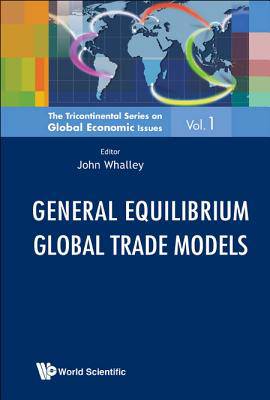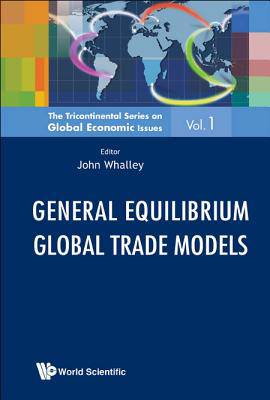
Je cadeautjes zeker op tijd in huis hebben voor de feestdagen? Kom langs in onze winkels en vind het perfecte geschenk!
- Afhalen na 1 uur in een winkel met voorraad
- Gratis thuislevering in België vanaf € 30
- Ruim aanbod met 7 miljoen producten
Je cadeautjes zeker op tijd in huis hebben voor de feestdagen? Kom langs in onze winkels en vind het perfecte geschenk!
- Afhalen na 1 uur in een winkel met voorraad
- Gratis thuislevering in België vanaf € 30
- Ruim aanbod met 7 miljoen producten
Zoeken
General Equilibrium Global Trade Models
€ 245,95
+ 491 punten
Omschrijving
This book sets out techniques for using general equilibrium numerical trade models and their application for both researchers and practitioners in governmental and international agencies. The chapters are connected by the broader theme of application of general equilibrium computational methods to a range of policy and other issues involving the global economy and international trade. They reflect a long evolution in method and application from the early 1970's until today.The chapters include procedures that allow a competitive equilibrium in international trade with tariffs to be calculated. Results of calculations of optimal tariffs with and without retaliation in a sequence of simplified two-good, two-country trade models are provided. A numerical general equilibrium model of international trade involving major world trading blocs (the United States, Japan, the EEC and the Rest of the World) is used to analyze the effects of alternative tariff-cutting formulae proposed by the major participants in the Tokyo Round negotiations under the GATT.
Specificaties
Betrokkenen
- Uitgeverij:
Inhoud
- Aantal bladzijden:
- 448
- Taal:
- Engels
- Reeks:
- Reeksnummer:
- nr. 1
Eigenschappen
- Productcode (EAN):
- 9789814383677
- Verschijningsdatum:
- 26/03/2012
- Uitvoering:
- Hardcover
- Formaat:
- Genaaid
- Afmetingen:
- 152 mm x 229 mm
- Gewicht:
- 766 g

Alleen bij Standaard Boekhandel
+ 491 punten op je klantenkaart van Standaard Boekhandel
Beoordelingen
We publiceren alleen reviews die voldoen aan de voorwaarden voor reviews. Bekijk onze voorwaarden voor reviews.








